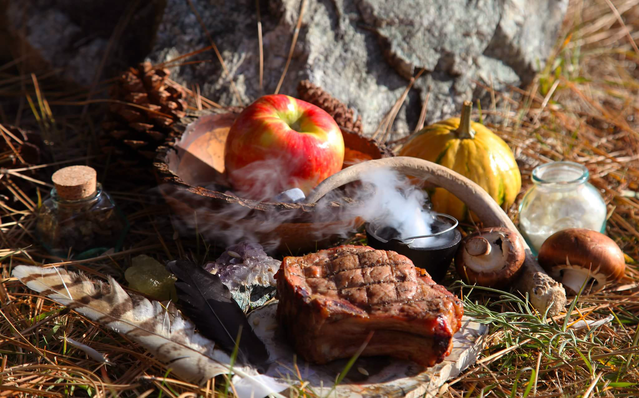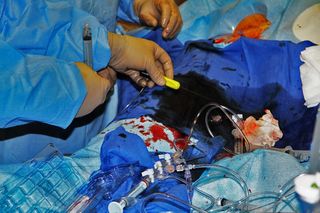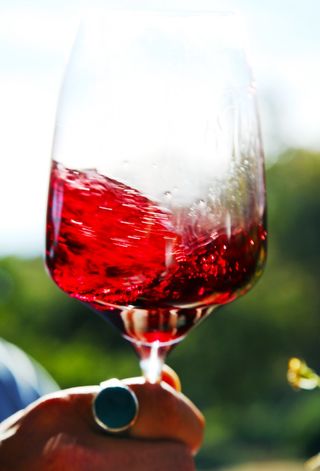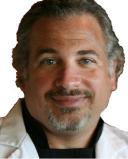
When I begin to discuss my forthcoming book, Food Shaman: The Art of Quantum Food (Post Hill Press, 2018), I am almost always immediately asked: “What is a Food Shaman?”
It is something I get asked a lot, and rightfully so. As a self-applied descriptor, it can seem about as helpful as “wellness enthusiast” or “life coach.” What does that mean exactly? Who determines the qualifications? Who do you hire when your life is a Cleveland Browns season?
Vocationally, as both a trained, accredited, practicing interventional cardiologist and professional chef, I have been and continue to be at both ends of a spectrum. Existing on the surface with footholds in worlds that seem unrelated and perhaps even, at times, diametrically opposed.
Food is an experience that is entrenched in pleasure. To comprehend food solely in terms of nutrition is akin to viewing sex as solely a biological imperative for procreation. It is to dismiss a warm embrace as simply a herding mechanism when it’s chilly. In short, such a strictly clinical sphere is a world without love.
Health, particularly achieved through the ardors of modern medicine, often seems rooted in sacrifice and deprivation. A puritanical perception that may have much more to do with deep-seated and lingering Calvinistic issues than any objective reality of wellness. While we have no ultimate dominion over death, our well-being is something within our discipline.
The recently completed OBITA trial highlighted that fact in the most profound and, to many interventional cardiologists, most unsettling way. For a lot of patients who currently receive intra-coronary stents (percutaneous coronary intervention or PCI), the goal of such a procedure is symptomatic relief of their chest pain or stable angina. However, there is no evidence from blinded, placebo-controlled, randomized trials to show if there is benefit in a procedure that is performed in over 500,000 individuals annually worldwide.
ORBITA was such a trial of PCI versus a placebo procedure for angina relief that was done at five study sites in the UK. The researchers enrolled 230 patients with ischemic symptoms consistent with stable angina. The patients underwent cardiac catheterization, a common practice to evaluate angina in the United States, and they were included in the study if they had a single coronary artery with a severe (≥70 percent) stenosis. This degree of blockage was also measured physiologically with a device that calculates the fractional flow reserve (FFR). The mean value in the study was a FFR of 0.69. All of these findings would provide an incontrovertible rationale for the implantation of an intra-coronary stent according to current guidelines.
Patients either received such a device or underwent a sham procedure. All participants then underwent 6 weeks of medication optimization. Subsequently, they were questioned regarding their symptoms, and they underwent stress testing. There was no significant difference in the degree of chest pain or exercise (treadmill test) time between groups, and no one in either group died.

The researchers concluded that:
ORBITA has implications for our clinical understanding of stable angina. The concept of a simple linear link between a tight stenosis and angina is attractive to patients, easily explained by physicians, and biologically plausible. Moreover, since relieving the anatomical and haemodynamic features of stenosis by unblinded PCI is followed by the patient reporting angina relief, it is understandable that this link becomes generally accepted.
However, forgetting the potential magnitude of placebo effects prevents exploration of the inevitably complex relationship between anatomy, physiology, and symptoms. Clinicians have hoped there might be a simple entity named ischaemia, which manifests as positive tests and clinical symptoms, and that treatment by PCI would eliminate all these manifestations concordantly. Perhaps this notion is too optimistic.[i]
And, I might add, too simplistic. We are complicated.
I do not believe that the natural, authentic, and wholesome foods that nature has provided are the cause of our current health crisis. I do not believe that carnivory which fueled our ascent up the evolutionary ladder is responsible for all our modern ills. I do not believe that consuming fermented beverages, which have been a measure of every tribe since there has been a modern human species, is the genesis of our current pandemic. I do not believe that real butter makes you fat, eggs cause heart attacks, or a slice of authentic baguette topped with Époisses de Bourgogne causes diabetes.

I do believe that these natural and wholesome foods that nature has provided is our connection to spirit: the place within us that had the power to heal those patients in the ORBITA trial as well as the best modern medicine can offer. I do believe that these natural, authentic, and wholesome foods that nature has provided are the link that binds us as a symbiotic microcosm to that macrocosm we call life on Earth.
I do believe that ultra-processed adulteration of our food and food pathways has opened the door for the chronic scourge of modern disability and disease, like Legionella sitting in a damp, untended air conditioning vent. These alterations are fundamentally changing our gut microbiome and unmasking vulnerable genetics. I do believe that continuing down this corridor is not just a fall from grace, but a dietary descent into a gustatory Gehenna.
But I also believe in hope, that we are not there yet. That we, like the patients in the ORBITA trial and many other studies, can take charge of our own destiny through our own authentic experience. Absence of evidence is not evidence of absence; just because we cannot fully explain, understand, or predict an occurrence or thing does not make our experience with it any less tangible, real, or impactful.
It is these events that construct our reality. We do not live in a universe of things; we live in a universe where things are defined by their relationship to one another. We are defined by, and help define, our relationships. It is about the quality of those relationships, not the number of “likes” at the end of the day. As human beings, we do not strive to consume a subsistence existence like cattle. We seek out our sovereign food experience, our relationship with food and one another.
The Food Shaman is a Janus at the Gateways. The Food Shaman stands betwixt and between. The Food Shaman is a wanderer amongst those worlds of food and fitness, health and homemade, medicine and magic. Collecting the best of both, integrating the flavors, and serving up bits and bites of toothsome pleasure; this is where the Food Shaman abides. This is the mission.
Won’t you join?
[i] (Al-Lamee, et al., 2017)

References
Al-Lamee, R., Thompson, D., Dehbi, H.-M., Sen, S., Tang, K., Davies, J., . . . Francis, D. P. (2017). Percutaneous coronary intervention in stable angina (ORBITA): a double-blind, randomised controlled trial. The Lancet, http://dx.doi.org/10.1016/S0140-6736(17)32714-9.




